论文总字数:13839字
目 录
摘要 I
Abstract II
1引言 1
2材料与方法 2
2.1 垃圾来源及预处理 2
2.2 实验方法 2
2.2.1实验装置 2
2.2.2实验设计 2
2.2.3分析方法 2
3结果与讨论 3
3.1 分段拟合 3
3.2 温度与不同阶段产气量的关系 4
3.3 温度与不同阶段产气时间的关系 7
4结论 9
参考文献 10
致谢 12
温度对垃圾发酵不同阶段的影响
季丽婷
,China
Abstract:The effect of temperature on the fermentation process is significant.There are more controversies about the impact of CH4 emissions on temperature.There are few studies on the effects of gas production rate and cumulative gas production on temperature at various stages.The model of gas production rate changing with time at home and board mainly fitted the overall law of the process.And it is not thorough for the research of the piecewise fitting on the gas production rate at each stage.This study is based on the experiment of gas production in small amount of components.Measure the gas production at different temperatures per hour to record the changes.At the same time, the gas production curve is segmented and fitted combing with the methane concentration in the component.Thus the reaction time at each stage can be determined.Through these work above,we analyze the effects of different temperatures on the gas production rate at different stages.The data of the experiment shows that: the impact of temperature is higher in peak period and stable period while lower in decay period;the fitting curve of peak period need further analysis for the lack of sample; the decay period is unstable at the last stage fermentation.The effect of temperature on the time of gas production at each stages is different.At the temperature of 15℃, the minimum value of time biogas production at different time is 21.4% in stable period. At the temperature of 25℃,the minimum value of time biogas production at different time is 13% in peak period and the value is 40.5% in stable period;the maximum value taking at 46.5% in decay period.At the temperature of 35℃,the fuller reaction takes in peak period and stable period;the minimum value of cumulative biogas production at different time is 4.2% in decay period.The biogas production efficiency is highest in peak period,lower in stable period,lowest in decay period.
Key words:fermentation; temperature; piecewise fitting; biogas production rate
1引言
人类生产活动不断增加,温室气体浓度的升高导致温室效应增加,引起全球气候变暖。CO2和CH4对温室效应的影响最为强烈[1-3]。我国每年的生活垃圾产量约为1.5亿吨[4],卫生填埋是目前主要的生活垃圾处理方式,每年处理的垃圾产量约为6404.0×104t[5]。IPCC(政府间气候变化委员会)的统计数据显示,垃圾发酵过程中产生的CH4约占总排放量的5%~10%[6]。CO2也是发酵产气中同样不可忽略的主要组分[7]。 CH4和CO2作为对人类造成主要影响的温室气体,研究发酵过程中产气的排放速率及其规律,可以对探讨发酵产气对温室效应的影响提供相关依据,具有一定的实际意义。关于卫生填埋场的CH4排放,国内外已有众多学者进行了相关研究[8-13]。刘鸿霆等,通过静态箱采样观测到上午11点左右甲烷释放速率达到最大,下午逐渐下降,夜间至凌晨甲烷释放速率最低[14];Mohammed等,在对填埋场采样期间,测得CH4和CO2排放量在短时间内的变化无固定模式,与空气、土壤温度及大气压力的之间也无明显的相关性[15];杨雪等,通过静态箱结合气相色谱法观测到相同填埋作业区上午、中午和下午释放的CH4气体通量差异相对较小,但呈下午﹥中午﹥上午的趋势[4]。由这些结论我们可以看出,对于填埋场CH4排放规律的研究有较多争议,对于不同填埋场的产气速率不同无法做出合理解释。
在整个发酵过程中,产气释放通量受到温度和含水率的影响较大[16],尤其温度的影响作用明显。在此前众多学者的研究中,已经对温度对发酵的影响做出了一定的阐述。如李阳等通过间歇实验,得出接种酵母菌和醋酸菌的餐厨垃圾微氧发酵产乙酸,温度对乙酸的产生量影响显著[17];文科军等,通过正交试验分析,得出厌氧发酵过程中各影响因子对产气量影响的主次关系为:温度﹥C/N﹥厨余种类﹥C/P[18];可以看出,温度对发酵过程的影响十分重要,有一定的研究意义。
由于酶的活性在各个温度下的活性不同,对微生物的生长和代谢造成影响,进而对产酸产气造成影响。目前关于温度对于发酵的影响主要集中在发酵的整个阶段,并且观测到了日产气速率的整体变化规律。如吴满昌等,通过对生活垃圾进行批量试验,发现不同发酵温度下的日产气速率在达到高峰后开始下降[19];马宗虎等,采用批式试验,得出在不同的发酵浓度下甲烷日产量在发酵初期逐渐升高,随后出现峰值,随后沼甲烷产率迅速下降[20];赵宋敏等,通过厌氧发酵实验,比较了不同温度对累计产气量和气体组分体积分数的影响[21]。这些研究将不同温度对于发酵整体过程的影响进行了相关的实验分析,但对于其上升、稳定、下降的各个阶段的产气速率及累计产气量的研究较少。
对于沼气产气率和产气量随时间的变化规律的研究与预测及对产气机理分析的主要预测模型有S-C模型,P-V模型,S-A模型[22-23]等,这些模型对于产气率随时间的整体趋势进行了拟合分析,但对于各个阶段的分段拟合研究不透彻。
因此,实验选取生活垃圾为原料,在不同温度下进行少量产气实验。得到组分的单位产气量,同时测定发酵产气组分中甲烷浓度变化,依据以上两者对曲线进行分段并拟合出不同阶段的产气曲线,进而探讨温度对发酵不同阶段的影响。
2 材料与方法
2.1 垃圾来源及预处理
实验所采用的垃圾组分主要来自附近居民的生活垃圾,主要成分是厨余垃圾,其余还有一定量的金属、秸秆、织物和塑料等。收集的垃圾剔除杂物后,破碎至3-5cm,混合均匀,加水调节至一定含水率后,密封在500ml的锥形瓶内,放置于4℃环境下防止预酸化。其主要成分和含水率测定如表1所示。使用同等垃圾组分经发酵产生的滤液进行接种。
表1 实验垃圾组分
类别 | 所占比例 | 含水率 |
厨余类 | 50% | 0.849 |
钢渣 | 20% | 0.0649 |
秸秆 | 10% | 0.411 |
纸类 | 10% | 0.0714 |
织物 | 5% | 0.0566 |
塑料 | 5% | - |
2.2 实验方法
2.2.1实验装置
剩余内容已隐藏,请支付后下载全文,论文总字数:13839字
相关图片展示:
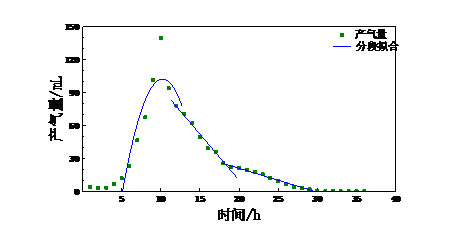
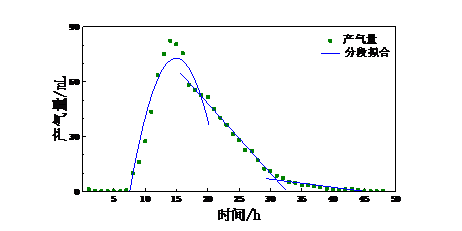
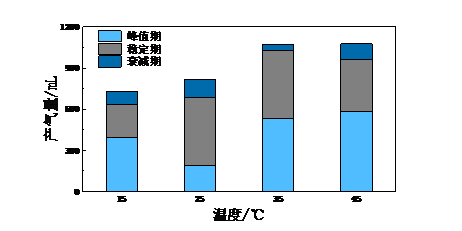
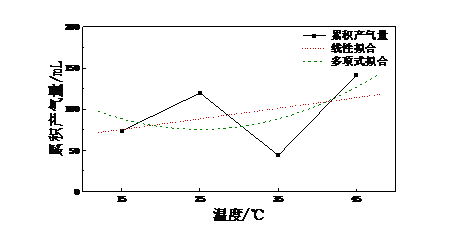
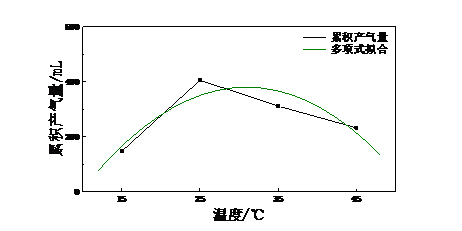
该课题毕业论文、开题报告、外文翻译、程序设计、图纸设计等资料可联系客服协助查找;


